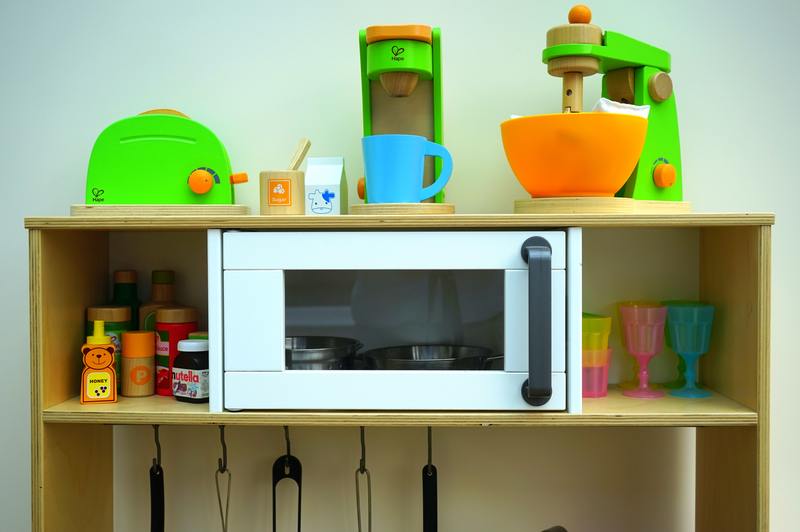Want to learn how to get mildew out of microwave? We will give you the best steps in washing the mildew out of it!
If you microwaved food for a week, we’re guessing the microwave reeks, and you’ll have a moldy disaster on your hands! Getting rid of grease and filth in your microwave doesn’t have to be a difficult chore with the help of these microwave cleaning methods.

You can also read this article about how to get mildew off stove for additional cleaning guidelines.
Is it possible for mildew to develop in a microwave?
Mildew development can occur for various reasons, including whether the odor developed gradually over time or you forgot about the reheated leftovers in the microwave. A musty smell in the microwave, on the other hand, is a telltale symptom of mildew growth.
Black and green fuzzy patches forming in the corners are further signs to look for. Mildew may develop in any environment, including your microwave, if the right conditions are present.
Be sure to check on this article about how to identify black mold vs mildew for you to compare them easily.
Mold Growth Conditions
Condition #1. Mold cannot grow in a microwave that is kept clean and dry. Mold spores are living creatures that require specific key components to survive.
Condition #2. Food particles left behind would serve as the first breeding grounds for mildew to form. Mold may quickly spread once it has gained a foothold because the spores concentrate and multiply.
Condition #3. Mold and mildew require a constant supply of moisture in addition to nutrients. You should expect a mold problem to develop fast if moisture accumulates inside a dirty microwave.
Removing Mildew Out Of Microwave
Microwaves are manufactured of mildew and mold-resistant surfaces that create a lot of heat while being nutritionally devoid. However, if you don’t clean it out on a regular basis, you can wind up with a moldy mess.
Although mold cannot develop in a microwave, food left inside can. Mold spores can turn into mildew and mold if food scrap and moisture are accumulated inside the microwave.
Follow these measures to avoid mildew and clean mold from your microwave.
Step #1. Clean the microwave
Using a damp sponge and liquid detergent, gently scrape the surface. Remove any spills or food crumbs that may have accumulated inside the microwave.
Step #2. Dry the microwave’s interior
Mold growth necessitates the presence of nutrients and moisture. You effectively prevent the bacteria from hatching and re-growing by removing both available needs.
Step #3. Using white vinegar, scrub the area
Vinegar is an excellent disinfectant for cleaning surfaces in the home. On heavy-duty cleaning chores, dilute vinegar 50/50 with warm water or use it at full strength to maximize its purpose on your cleaning task.
Step #4. Wait for the solution
Allow the vinegar solution to stay for 15 minutes after wiping the surfaces clean. Vinegar has a better effect the more you leave it on the mildew infestation; do not underestimate its efficacy!
Step #5. Rinse well with water
Wipe the vinegar solution off the surfaces with a clean towel dampened with clean water. If you allow the microwave door to open for a few minutes to allow thorough drying, the vinegar smell will go away.
Step #6. Mildew germination should be avoided
After each usage, clean the microwave. It’s also a great idea to leave the door open thereafter to let any steam escape and avoid it becoming trapped within the enclosed space.
Effects Of Microwave Radiation On Mildew
Microwave radiation does not kill mildew or mold. Some active spores can be neutralized by the intense heat generated inside the contained space, but this shouldn’t be relied on significantly.
If the mold colonies are not eliminated, they can revive and develop new growth zones. To ensure that mold does not grow, you must clean and sanitize the entire area to remove mold spores.
Vinegar can eliminate mold microorganisms, allowing you to clean the surface and remove excess moisture. The vinegar smell will fade away, leaving the microwave smelling clean.
Lemon’s citric acid helps disinfect your microwave and remove mold from the surface. This method works well since it leaves a pleasant lemon aroma in your microwave.
Conclusion
If mold is growing within your microwave, you should not use it to heat food until the interior has been thoroughly cleaned and disinfected. Microwave radiation, as previously stated, can not successfully kill mold spores.
As a result, you expose yourself to the possibility of mold spores accumulating on your meals. Mold has been connected to disease, respiratory difficulties, and allergic reactions, therefore it’s better to deal with the problem as soon as possible.
Make sure you follow the methods outlined above to avoid any potential health risks, as mold and mildew are both capable of getting us sick. That will be all on how to get mildew out of microwave ovens!
